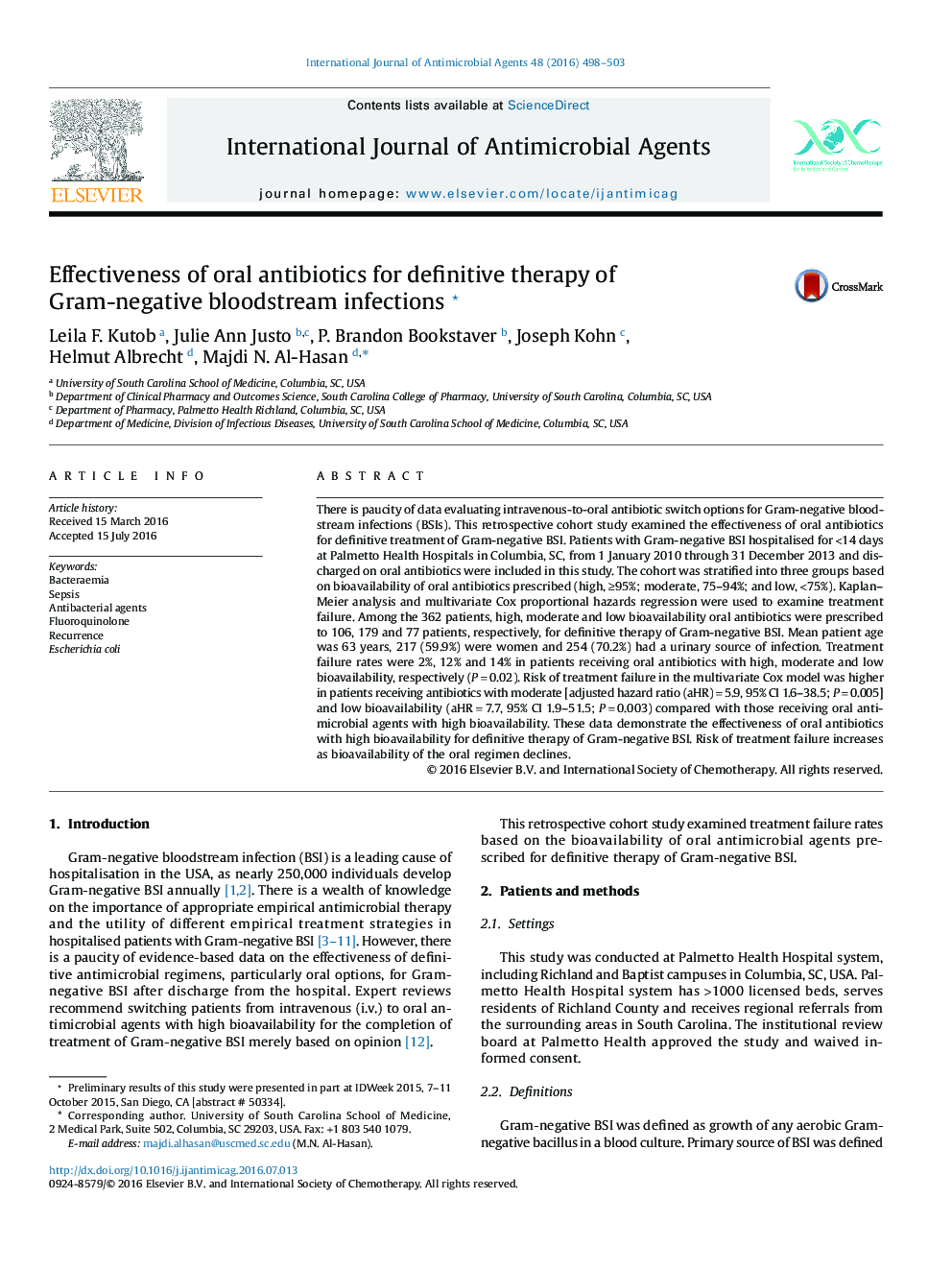| Article ID | Journal | Published Year | Pages | File Type |
|---|---|---|---|---|
| 5667057 | International Journal of Antimicrobial Agents | 2016 | 6 Pages |
â¢Intravenous agents for entire course of therapy for Gram-negative bacteraemia are unnecessary.â¢Oral antibiotics with high bioavailability have very low treatment failure rates.â¢Effectiveness declines when oral agents with lower bioavailability are used.
There is paucity of data evaluating intravenous-to-oral antibiotic switch options for Gram-negative bloodstream infections (BSIs). This retrospective cohort study examined the effectiveness of oral antibiotics for definitive treatment of Gram-negative BSI. Patients with Gram-negative BSI hospitalised for <14 days at Palmetto Health Hospitals in Columbia, SC, from 1 January 2010 through 31 December 2013 and discharged on oral antibiotics were included in this study. The cohort was stratified into three groups based on bioavailability of oral antibiotics prescribed (high, â¥95%; moderate, 75-94%; and low, <75%). Kaplan-Meier analysis and multivariate Cox proportional hazards regression were used to examine treatment failure. Among the 362 patients, high, moderate and low bioavailability oral antibiotics were prescribed to 106, 179 and 77 patients, respectively, for definitive therapy of Gram-negative BSI. Mean patient age was 63 years, 217 (59.9%) were women and 254 (70.2%) had a urinary source of infection. Treatment failure rates were 2%, 12% and 14% in patients receiving oral antibiotics with high, moderate and low bioavailability, respectively (Pâ=â0.02). Risk of treatment failure in the multivariate Cox model was higher in patients receiving antibiotics with moderate [adjusted hazard ratio (aHR)â=â5.9, 95% CI 1.6-38.5; Pâ=â0.005] and low bioavailability (aHRâ=â7.7, 95% CI 1.9-51.5; Pâ=â0.003) compared with those receiving oral antimicrobial agents with high bioavailability. These data demonstrate the effectiveness of oral antibiotics with high bioavailability for definitive therapy of Gram-negative BSI. Risk of treatment failure increases as bioavailability of the oral regimen declines.
